Why the Proboscis monkey has the largest nose of any primate
- Nature Conservation
- Land Conservation
- Iconic Species
- Wildlife
- Mammals
- Southeast Asian Forests
- Indomalaya Realm
One Earth's “Species of the Week” series highlights the flagship species of each of the 844 unique ecoregions contained within Earth’s bioregions.
With a protruding belly, a tawny-red fur patch resembling a unibrow, and the largest nose of any primate, the proboscis monkey (Nasalis larvatus) might not win a beauty pageant by human standards. However, these unusual traits are evolutionary marvels.
In the world of proboscis monkeys, bigger is better—females are drawn to males with larger noses and bellies, markers of fitness and dominance.

The proboscis monkey is the iconic species of the Borneo Tropical Forests & Sundaland Heath Forests bioregion (IM16), located in the Southeast Asian Forests subrealm of Indomalaya.
Found only on Borneo’s coastal mangroves and swamps
Endemic to the jungles of Borneo, proboscis monkeys thrive in coastal mangroves, swamps, and riverine forests. This island, politically divided among Malaysia, Brunei, and Indonesia, is home to these monkeys' fascinating behaviors and unique adaptations.
Agile tree leapers and exceptional swimmers, they frequently delight observers with dramatic belly flops into the water. Their webbed hands and feet make them unparalleled in swimming among primates.
The primate world’s most prolific swimmers
Proboscis monkeys are celebrated as one of the most aquatic primates, capable of swimming underwater for up to 20 meters. This adaptation helps them navigate their dense, water-rich habitats and evade predators like crocodiles. Unlike many primates, they rely on rivers as much as they do the trees, an evolutionary niche that few can match.
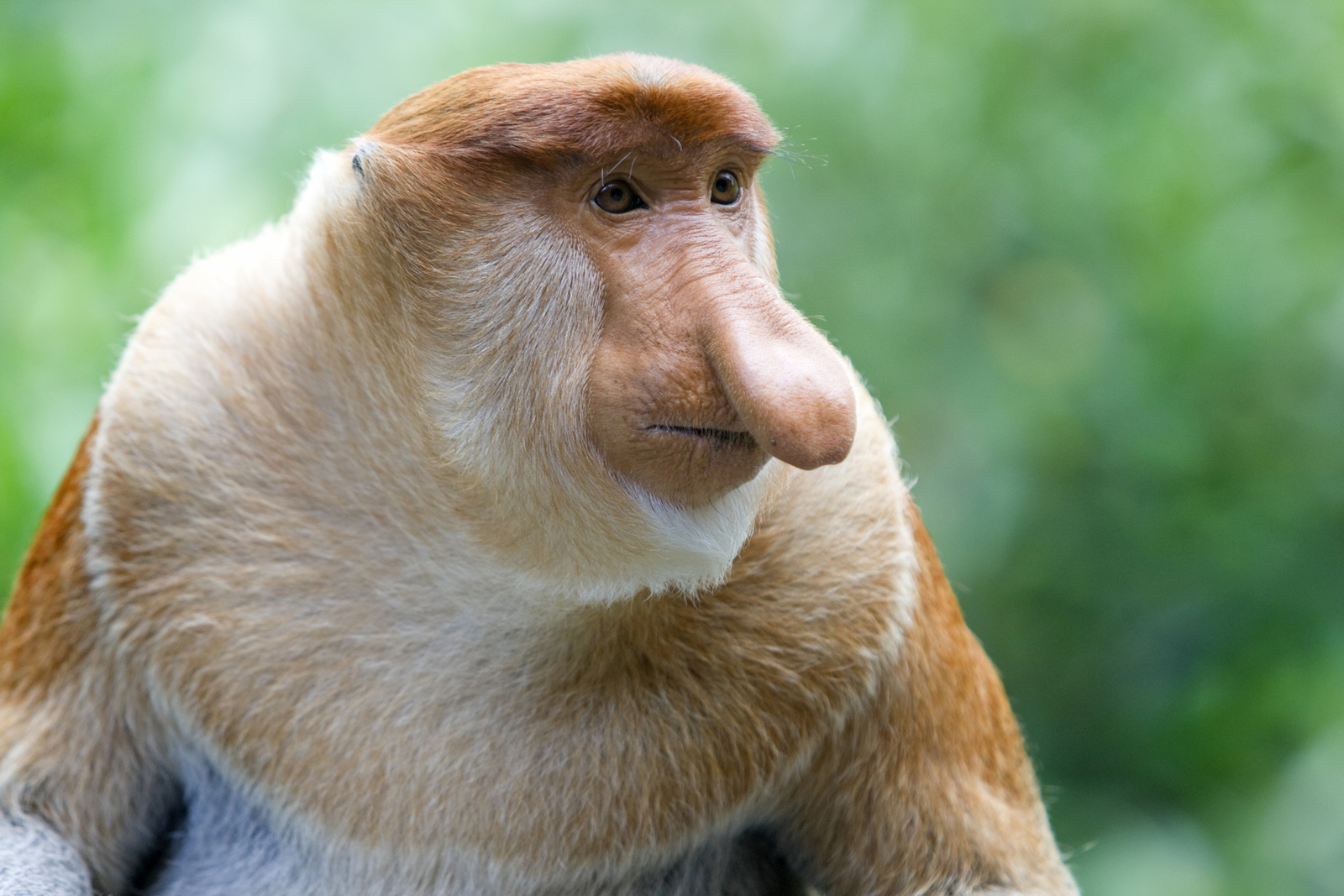
An endangered proboscis monkey in the mangrove, Kota Kinabalu, Malaysia. Image Credit: © Kjersti Joergensen | Dreamstime.com.
Potbellies built for toxin-breaking feasts
The proboscis monkey’s iconic potbelly is more than an aesthetic feature; it’s a digestive powerhouse. These primates survive on tough, toxin-laden mangrove leaves that other animals can’t process. Their multi-chambered stomachs, filled with specialized bacteria, break down these leaves, ensuring they thrive in this challenging environment.
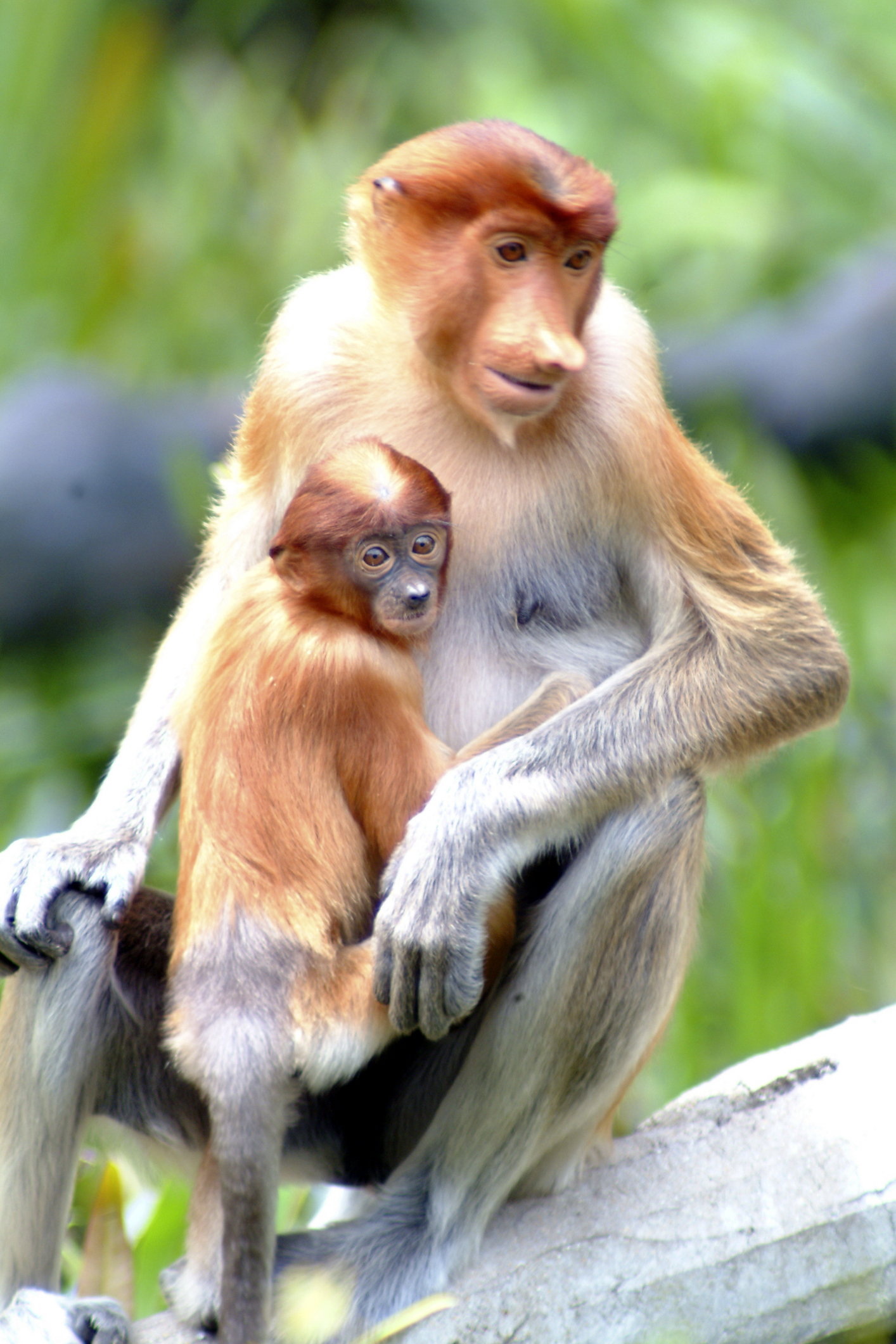
Mother proboscis monkey with baby in Kinabatangan, Sabah, Malaysia. Image Credit: © Bokgallery | Dreamstime.com.
A tale of two noses: Unique sexual dimorphism
Proboscis monkeys display striking sexual dimorphism. Males, larger and heavier than females, grow up to 30 inches (0.76 m) long and can weigh up to 50 pounds (22.68 kg). Their defining feature, however, is the elongated nose, which can exceed four inches and serves as an amplifier for their mating calls. Female and juvenile monkeys sport smaller, upturned noses that evoke whimsical comparisons to Dr. Seuss’s Whos.
Harem harmony and echo chamber calls
Living in harem groups, proboscis monkeys exhibit complex social dynamics. A dominant male leads a group of females and offspring, using his impressive nose to amplify low, resonating calls that attract mates or maintain group cohesion. Mating season extends from February to November, with births peaking in spring. Mothers are the primary caregivers but allow other group members to handle infants, fostering a cooperative social structure.
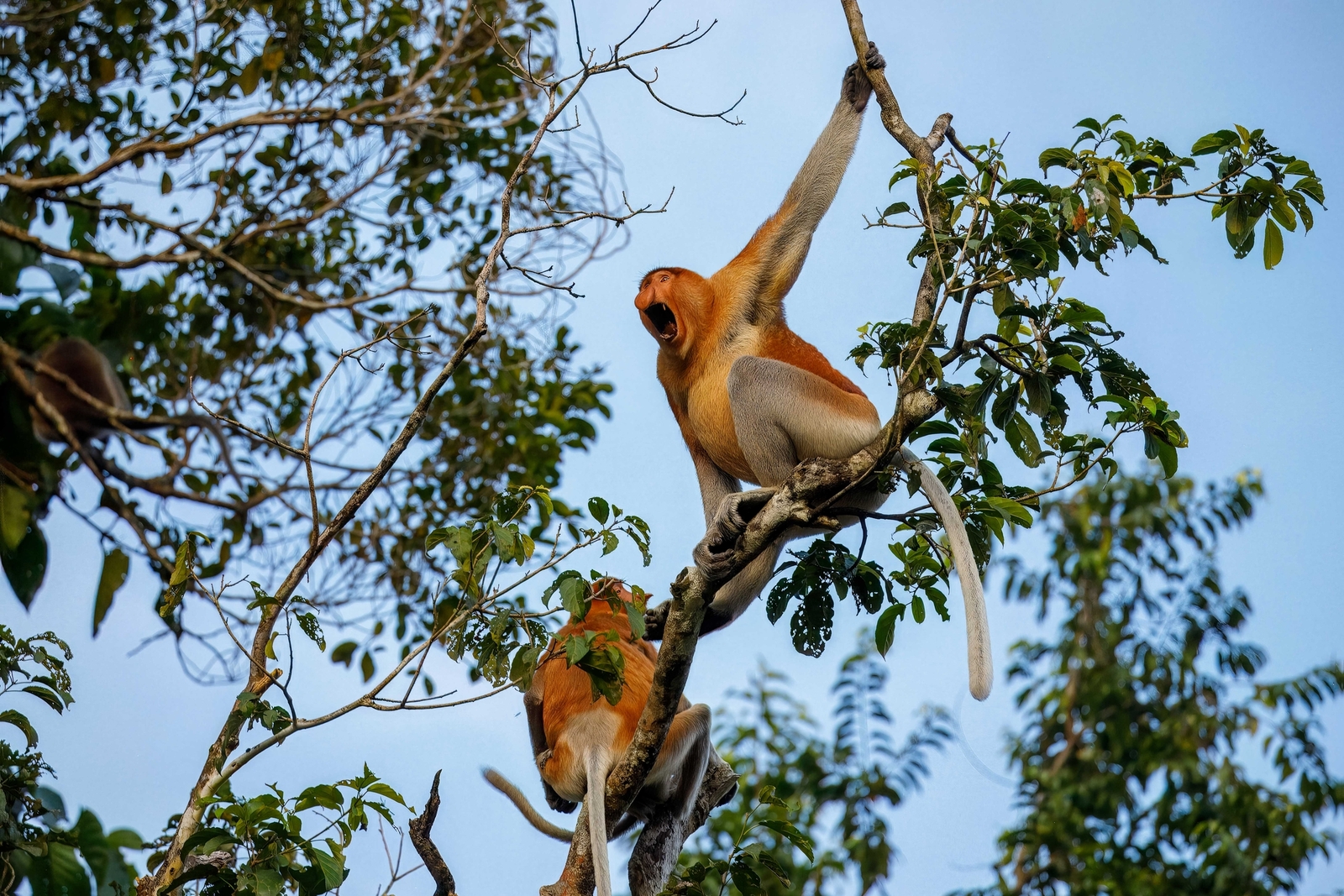
A male proboscis monkey sounding warning in treetops on the Kinabatangan River, Borneo, Malaysia. Image Credit: © Karen Foley | Dreamstime.com.
Facing habitat loss: Protecting the “Dutch Monkey”
Nicknamed “Dutch monkey” by locals for their perceived resemblance to colonial settlers with large bellies and noses, proboscis monkeys are endangered. Their numbers have plummeted due to deforestation for timber and palm oil plantations, as well as hunting. Conservation efforts focus on preserving their mangrove habitats and raising awareness about their ecological importance.
Preserving proboscis monkeys does more than protect a single species. These charismatic primates play a vital role in maintaining the health of mangrove ecosystems, which are critical for biodiversity, carbon sequestration, and coastal protection. Safeguarding their future means fostering a healthier planet for all.
Support Nature Conservation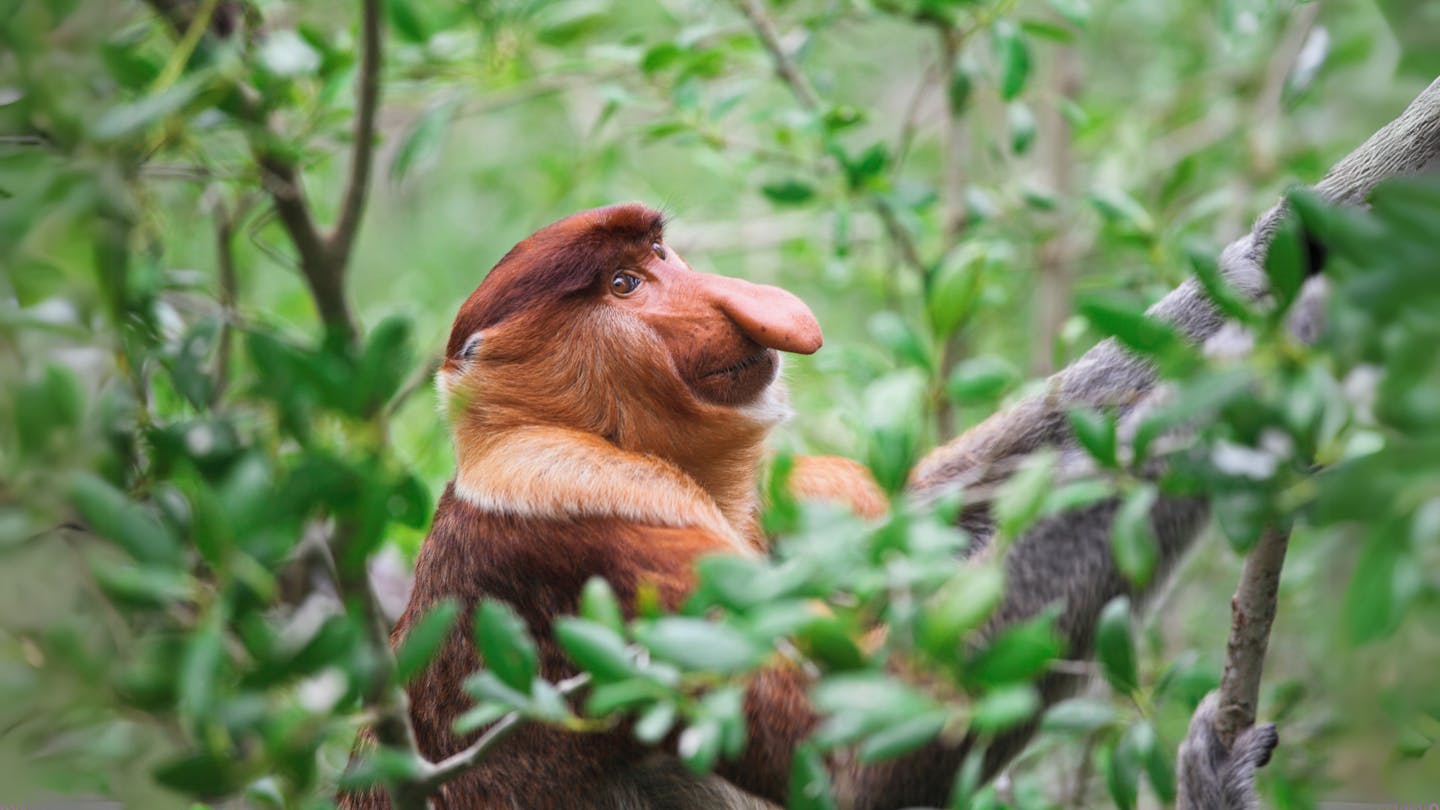

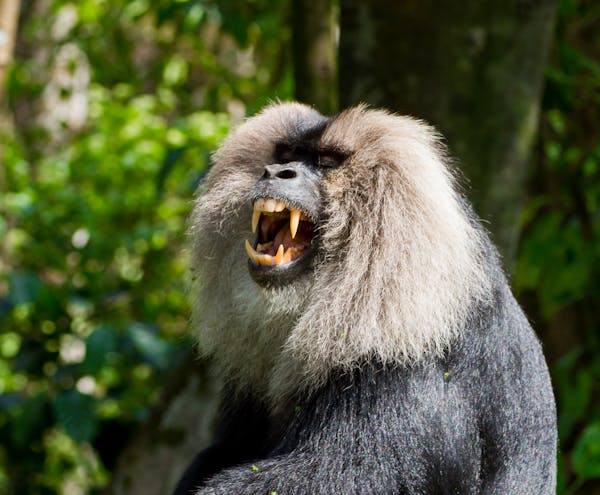
.jpg?auto=compress%2Cformat&h=600&w=600)

